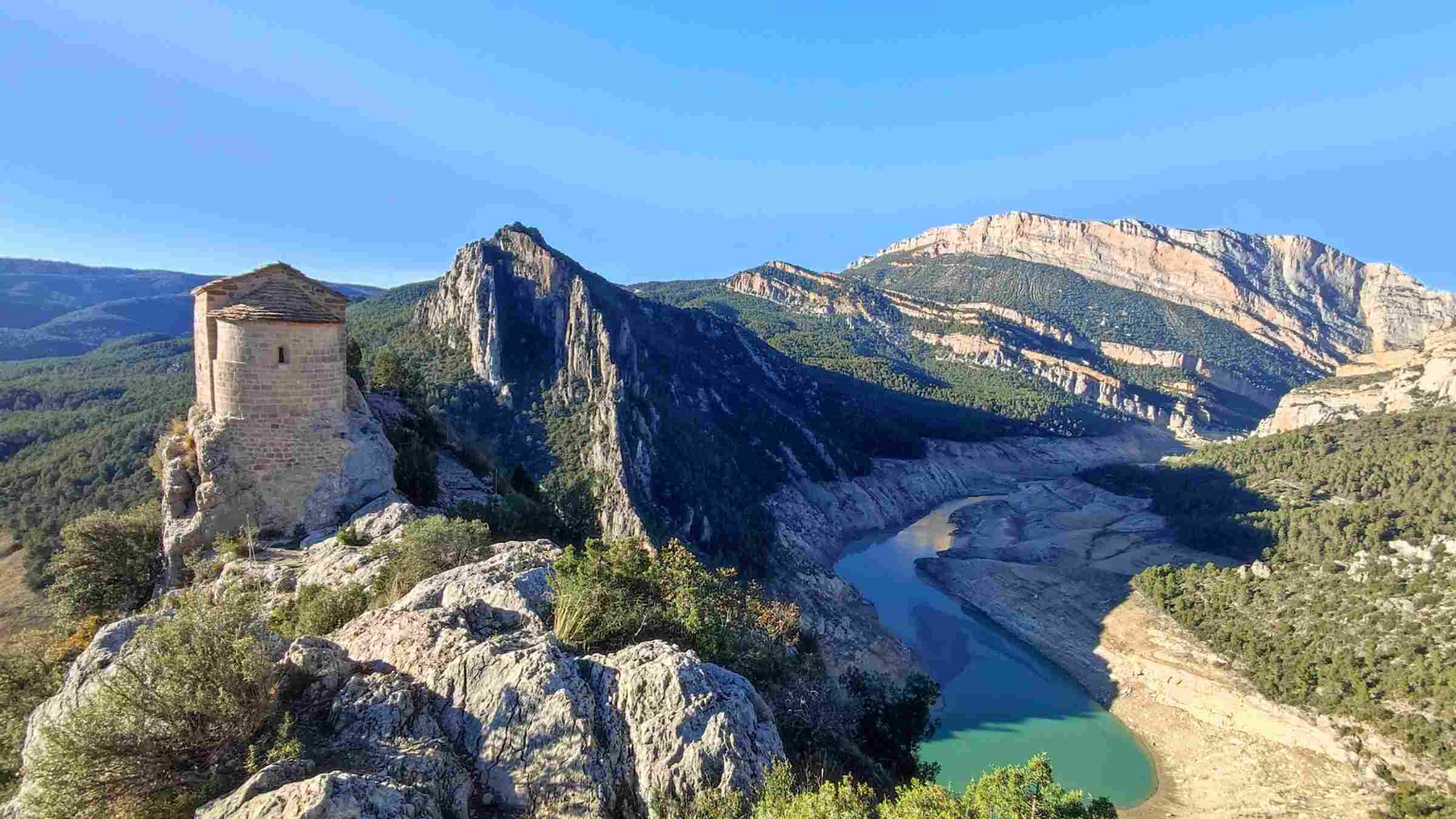Good news in the midst of the catastrophe. Catalonia's two western-most catchment basins, those of the rivers Noguera Pallaresa and Noguera Ribagorçana, which are fed by the high Pyrenees mountains, have dropped a notch from their previous drought alert situation - although they have only done so by a "small margin" - and now they return to the pre-alert drought level. All this, while almost all of Catalonia enters its fourth year of a very difficult situation due to a lack of water. Of course, it must be borne in mind that the circumstances are different for these basins which are fed from the Pyrenees in Catalonia's north-west and then flow into the Ebre, where the drought has not hit so hard as in Catalonia's internal basins further east. Specifically, the December monthly report from the Ebro Hydrographic Confederation (CHE), which administers these western catchments reveals that the Noguera Pallaresa and Noguera Ribagorçana reservoirs are currently at 43.21% of their capacity, with 653.9 cubic hectometres of water.
Of these, 378.9 cubic hectometres correspond to the Noguera Ribagorçana reservoirs (Baserca, Escales, Canelles and Santa Anna), representing 35% of its capacity. Meanwhile, there are 275 cubic hectometres in those of the Noguera Pallaresa (Sant Antoni, Terradets and Camarasa reservoirs), which are at 65% of capacity. Last week, the CHE's calculations already predicted the transition from the alert situation to the pre-alert. This implies that the savings measures to be applied by users will not be so severe, with agriculture and livestock as the main beneficiaries, as there will now be capacity for irrigation. These two catchments have been in a state of alert since May 2023.
However, it is a different story for the third-most westerly of Catalonia's major catchments: in the Segre basin, the state of emergency remains in force for the twentieth consecutive month. In this case, the reservoirs of Oliana and Rialb are at 30% of their joint reserves and currently hold a total of 145 cubic hectometres of reserves. The Segre basin entered the emergency status in June 2022, and in the spring of last year, the situation forced the closing of two of Catalonia's largest irrigation facilities, the Urgell and Segarra Garrigues canal networks, an unprecedented move. Agriculture had to face a reality without free irrigation, with limited water for residents, agriculture and industry.
The Ter-Llobregat, soon in emergency
While there is progress in the Ebro system, the Ter-Llobregat system which supplies most of the Barcelona metropolitan region as well as parts of Girona, is going in the opposite direction. Here, reserves continue to decline, and 2024 has begun with reservoirs at just 17% of capacity. The forecast is that this region, which has a population of six million people, will move from pre-emergency phase due to drought to full emergency level in a few weeks. The last three years - 2021, 2022 and 2023 - have been the driest in Catalonia's history for these catchments, a reality that has caused the gravely concerning current situation.

